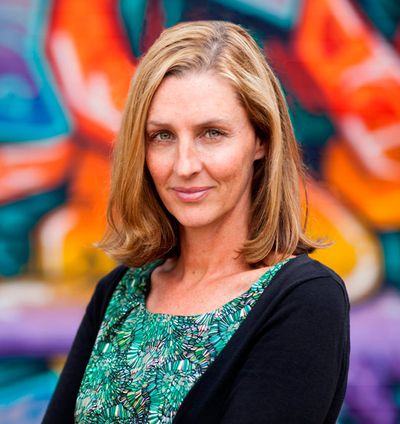Jason Austin talks with Anna George about her new novel,
What Came Before begins with David’s confession that he’s killed his wife Elle. As the story progresses, we learn not only what came before that event, but what came before the couple met and how their once passionate relationship fell apart. David, in particular is a very charming, yet very troubled character. Was it hard getting into the mind a person capable of committing domestic violence and how did you go about preparing to enter his dark places?
I wrote my way into David. In very early drafts he was not physically violent and the book was exclusively about emotional abuse. I was interested in how a financially independent, childless woman can become stuck with an emotionally abusive man, and struggle to leave him. But then I realised, if I wanted to fully explore the risks associated with being with a man like David, I needed to make him violent.
I’d researched domestic violence and understood that essentially it’s an ongoing pattern of behaviour aimed at controlling one’s partner through fear. The violent behaviour being part of a range of tactics used to exercise power and control over her. To write David, I needed to break that down to the personal and understand why David did what he did, and what he understood about it. To do that, I used what I’d learned from my research and from my own observations of people who’d been abusive. I also tried to tap into my own darkest places and most dysfunctional relationships to understand David’s thinking and his hot-cold, push-pull behaviour.
What happens in the central, violent scene was inspired by a number of true crimes. That scene is in Elle’s point of view, though, so I didn’t live it through David’s eyes.
You describe ‘limerence’ in the book as, a ‘heady, in-love state felt typically in the early days of a relationship’ and it is a recurring theme throughout the story. Elle seems to miss a lot of the warning signs regarding where their relationship is heading due to her limerent state. How did this theme first come to you and should we read this work as a cautionary tale?
Definitely, I see the book as a cautionary tale!
I stumbled across limerence when I was researching for the book. I wanted Elle to be staying with David because she believed she loved him and that he loved her, and what they had was rare and would improve – despite increasing evidence to the contrary. When I discovered limerence it seemed to fit perfectly to explain Elle’s almost delusional perception of their relationship. Dorothy Tennov, a psychologist in the 1970’s, coined the term. She identified limerence as being an involuntary and often irrational state fuelled by uncertainty and imbalance. I found her book Love and Limerence fascinating.
There’s a strong sense of place in the novel, particularly in the depiction of Melbourne’s inner-western suburbs of Yarraville and Seddon. How does the setting influence the lives of the characters?
Each of the main characters, David, Elle and Mira, Elle’s best friend, has a response to the setting and that response shifts slightly as the story unfolds. The book is concerned with risk and compromise and the inner-west setting reflects those concerns.
The book is both a gripping psychological thriller and a beautifully written literary novel. Although these two genres are not mutually exclusive was it difficult walking that line in your writing? Would you see it shelved in crime or general fiction?
I like to read literary novels that compel me to turn the page. I was trying to pace the book in such a way that a reader would be swept along with the story. But otherwise I didn’t set out to write one way or another. And I wasn’t conscious of whether I was writing a psychological thriller or a literary novel. The book is framed around a crime but I don’t see it as a crime novel, as such.

Photograph from Heidi Photography
The Grass is Singing and Disgrace are favourites of mine which both pivot around a central crime and they were early inspirations for this book. Though a crime is at the heart of the book, What Came Before is probably … maybe … best shelved in general fiction.
We love to know what people are reading. What have you read recently that you really enjoyed and what do you have next on your reading list?
I’ve just reread Jane Eyre and enjoyed it all over again. I’ve also recently finished Extremely Loud and Incredibly Close, which I marveled at; and, at the moment, I’m plunging back into Tess of the D’Urbervilles. The Luminaries and Thinking, Fast and Slow are waiting patiently on the table beside my bed.


